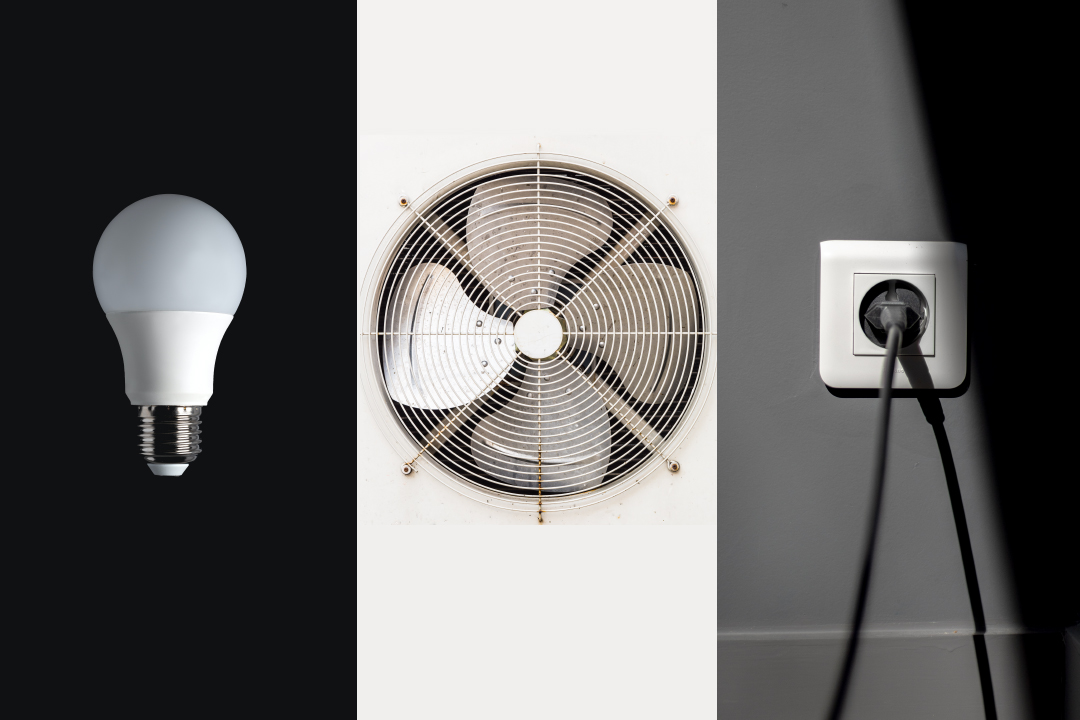5 Profitable Energy Efficiency Measures for Buildings

Buildings have been the primary consumers of energy, and the primary producers of atmospheric carbon dioxide for many a year. It’s got to the point now where energy efficiency measures are no longer a nice-to-have for buildings; but a need-of-the-hour.
Energy efficient solutions don’t just help fight against climate change. They also help cut back on energy and maintenance costs, and establish a competitive advantage. And no, they don’t always require a hefty initial investment.
In the following article, let’s begin by explaining what constitutes an energy efficiency measure. Then, we will look at 5 of the most profitable energy efficiency measures, and how to make buildings more energy-efficient.
What (really) are Energy Efficient Measures?

Any machine, software, system, practice, or retrofit that leads to a general reduction in energy usage, without significantly impacting level-of-service can be called an energy efficient measure. E.g., implementing a portfolio-wide policy of using energy-efficient appliances, or undergoing a smart retrofit for better energy reporting.
5 of the Most Profitable Energy Efficiency Measures
While there are other ways to make buildings energy efficient, these 5 are the most profitable and easiest to implement, in our opinion:
1. Comparing Your Building's Energy Performance to Standards:
To gauge your building's energy performance, it's essential to compare it to the standards for your building type. Standards vary among building types, and by comparing your building's energy usage against industry standards, you can determine if it's consuming too much energy compared to similar buildings in terms of size, age, and location. Establishing a baseline and different thresholds for energy consumption allows you to set alarms and notifications that identify reasons for overconsumption and take corrective actions.
At ClevAir, we provide our customers with the tools they need to gain insight into their building's energy usage, enabling them to make easy comparisons with local standards. In addition, ClevAir offers actionable insights and real-time optimization of ventilation systems, resulting in energy savings.
Also read : How Much Energy Usage is Normal for Your Building?
2. Visualising the energy you spend

Understanding your building's energy consumption and usage patterns is crucial for identifying areas of improvement and implementing effective energy-saving measures. While energy monitoring tools can be helpful, ClevAir provides a user-friendly dashboard that not only displays your building's energy consumption but also provides data on energy savings and CO2 emissions. With this information at your fingertips, you can make informed decisions about your energy usage and take actionable steps to increase your building's energy efficiency.
3. Making ventilation smarter by automating it (No matter if you have BMS)
HVAC and lighting are responsible for a major part of a building's energy consumption. There are various ways to optimize these systems and reduce energy usage. For instance, ventilation can be automated based on occupancy, weather, CO2 levels, and other factors, rather than following static setpoints. This approach can result in significant energy savings.
ClevAir offers integration with a variety of ventilation systems, whether or not they have BMS, to enable these real-time adjustments. By automating ventilation, ClevAir helps its customers optimize energy use and save money on their utility bills while maintaining a comfortable indoor environment.
4. Setting alarms to track equipment performance
Equipment malfunctions and inefficient operations can result in excessive energy consumption and high energy bills. Fortunately, advancements in technology and sensors allow for the timely detection of such issues. At ClevAir, our users receive email notifications when equipment malfunctions, deviations, or high levels of radon are detected. This early warning system enables users to take swift action before such issues lead to costly downtime or increased energy consumption.
5. Tracking building energy usage trends over time.
By keeping a record of your building's energy consumption over a longer period, you can identify what factors are influencing your building's energy usage. For instance, a broken piece of equipment could cause the ventilation system to use more energy, or the weather could have an impact. With ClevAir's dashboard, you can easily monitor and analyze energy usage trends over time, and compare performance across different buildings in your portfolio. This data can help you make more informed decisions about energy efficiency investments and identify opportunities to further reduce your energy consumption.
How Impactful Can Energy Efficiency Measures Be?
Implementing even the most basic energy efficient measures can yield long-term, tangible benefits.
Our customers who have prioritised optimising their ventilation systems have reported an average of 20% energy savings. Here are some of their comments on the positive impact of these measures:

John Lumb
DIRECTOR, EVOLUTION TECHNICAL SERVICES
" Bringing together the latest advancements and developments in PropTech, including the ClevAir system, enables us to provide our customers with significant improvements in how their buildings perform. Using enhanced building data and metrics from a range of IOT devices, cloud based analytical software, and ClevAir’s advanced machine learning algorithms, our building optimisation solution delivers compelling results.

Christian Lea Bjørnsen
CEO MØBELRINGEN I BJØRNSEN LYNGDAL, EGERSUND AND BRYNE
" We have been working on reducing our electricity usage on a long term. Our stores are large premises, we have periods with many people in the store and periods with few people, therefore the ClevAir solution suits us well. ClevAir paid for itself in about 6 months, and I especially like that the technology also provides savings on cooling by maintaining the night's low temperature when the weather forecast predicts a hot day.

Rikard Eriksen
HEAD OF PROPERTY MANAGEMENT CBRE
" Our measurements clearly show the effect of our actions. In 2022 we updated ClevAir to the latest version, and when I compare October 2018 to October 2022, the building consumed close to one million kWh less! Our investment in ClevAir is a No Brainer and a positive story both for CBRE and the tenants in the building, ClevAir is a significant reason for the energy efficiency in the building! In addition to the fact that ClevAir had just one year of ROI, it also contributes to an awareness of energy consumption that leads to more actions and we see proof of that technology really makes sense!

Lars Henrik Lauritzen
CEO BODØ RED CROSS
"We wish to reduce our climate footprint and contacted ClevAir for help. We experience ClevAir as a professional provider and at the same time we obtained a lower electricity bill and by that we have more money for our activities. After 9 weeks with ClevAir optimizing the ventilation in our building, we have reduced our electricity use by 20,7% even though ClevAir is only installed in two of three ventilation systems. That is a reduction by more than 14.000 kWh and nearly 400 kg of CO₂ in a 1.600 sq. building in just nine weeks.

Eirik Erstad
HEAD OF SALES, ENERGI SALG NORGE A/S
" Energi Salg Norge works actively with our customers and is genuinely concerned with delivering the best quality in all our deliveries. One of the most important things we do is to assist our customers with energy and cost-reducing measures. Together with our partner ClevAir, we can deliver efficient management of ventilation. This helps to reduce consumption and create even slightly more satisfied customers of Energi Salg Norge. We are proud of what ClevAir achieves together with us.

John Lumb
DIRECTOR, EVOLUTION TECHNICAL SERVICES
" Bringing together the latest advancements and developments in PropTech, including the ClevAir system, enables us to provide our customers with significant improvements in how their buildings perform. Using enhanced building data and metrics from a range of IOT devices, cloud based analytical software, and ClevAir’s advanced machine learning algorithms, our building optimisation solution delivers compelling results.

Christian Lea Bjørnsen
CEO MØBELRINGEN I BJØRNSEN LYNGDAL, EGERSUND AND BRYNE
" We have been working on reducing our electricity usage on a long term. Our stores are large premises, we have periods with many people in the store and periods with few people, therefore the ClevAir solution suits us well. ClevAir paid for itself in about 6 months, and I especially like that the technology also provides savings on cooling by maintaining the night's low temperature when the weather forecast predicts a hot day.

Rikard Eriksen
HEAD OF PROPERTY MANAGEMENT CBRE
" Our measurements clearly show the effect of our actions. In 2022 we updated ClevAir to the latest version, and when I compare October 2018 to October 2022, the building consumed close to one million kWh less! Our investment in ClevAir is a No Brainer and a positive story both for CBRE and the tenants in the building, ClevAir is a significant reason for the energy efficiency in the building! In addition to the fact that ClevAir had just one year of ROI, it also contributes to an awareness of energy consumption that leads to more actions and we see proof of that technology really makes sense!

Lars Henrik Lauritzen
CEO BODØ RED CROSS
"We wish to reduce our climate footprint and contacted ClevAir for help. We experience ClevAir as a professional provider and at the same time we obtained a lower electricity bill and by that we have more money for our activities. After 9 weeks with ClevAir optimizing the ventilation in our building, we have reduced our electricity use by 20,7% even though ClevAir is only installed in two of three ventilation systems. That is a reduction by more than 14.000 kWh and nearly 400 kg of CO₂ in a 1.600 sq. building in just nine weeks.
The potential for energy savings through optimization of ventilation depends on both the type of building and measures that have been taken in the past.
Contact us for a non-binding assessment of what ClevAir can potentially contribute to your building(s).





Comments
Add Comment